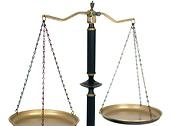High Court judgement
Australia's High Court came under the microscope at the 2008 Gilbert +Tobin Centre of Public Law's Constitutional Law Conference.
Australia's High Court came under the microscope at the 2008 Gilbert +Tobin Centre of Public Law's Constitutional Law Conference.

Last year Justice Susan Crennan held the broadest appeal as a collaborator on joint judgements across all members of the High Court, according to a report presented at the Gilbert +Tobin Centre of Public Law's seventh annual Constitutional Law Conference.
In analysing the High Court's decisions, Dr Andrew Lynch and Professor George Williams from the Centre, part of UNSW's Faculty of Law, found that the general pattern of decision-making continued along familiar lines but that Justice Crennan did establish herself as a dominant part of the consensus.
Formal disagreement on the Court was present in about half of all cases last year. Justice Kirby continued in his position as the Court's outsider, dissenting in over 40 percent of matters he decided - a reduction from the year before but still much higher than the nearest judge.
But while the frequency of a split bench remained steady, the Court decided far fewer matters unanimously than it had in previous years. Only 15 percent of cases were resolved with all Justices agreeing in one set of reasons.
Lynch and Williams also suggested that the Rudd government may use its chance to appoint replacements for both the departing Chief Justice Murray Gleeson and Justice Kirby to effect a change in direction on the Court.
"The retirement of the Chief Justice this year presents particularly intriguing possibilities," said Dr Lynch. "Not only is this because Murray Gleeson has been such a consistent member of the Court's majority opinions over his tenure, but also because of the leadership capacities of the office he will be vacating."